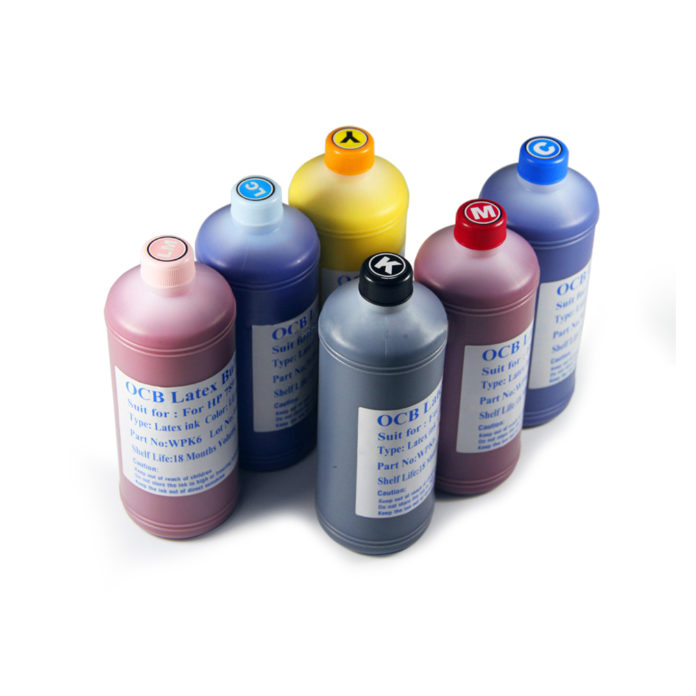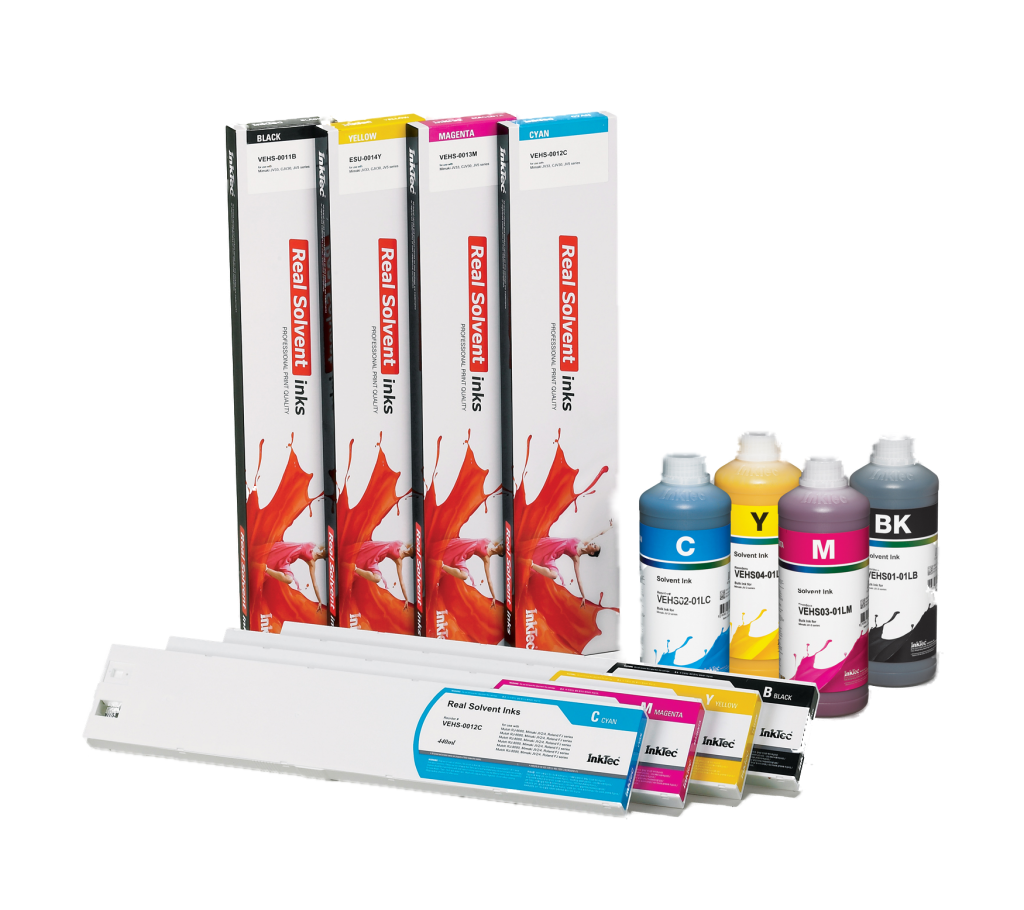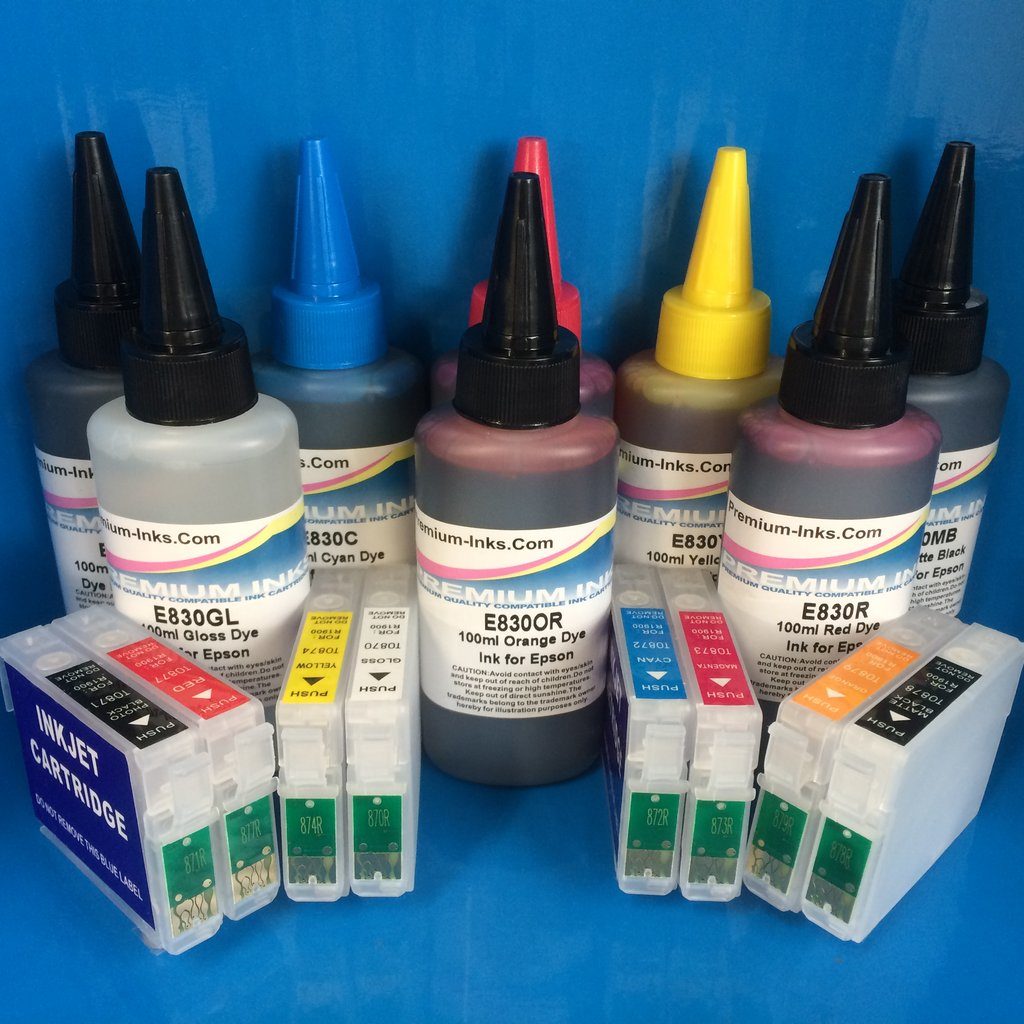
Choosing the right type of printer can be a significant investment for businesses— particularly those in creative industries. Whether you’re investigating printing methods for your business operations or client orders, investing in the right tools is essential for success.
For many businesses, latex ink is a stellar choice for printing needs. Here’s what you need to know about it to determine if it’s right for your business.
What is Latex Ink?

It is a water-based ink in which the pigment is held in a polymer and transported via water droplets. The water droplets spray from the inkjets to the surface, which is heated to evaporate the water, leaving the pigment and polymer behind. All of this happens instantly during the printing process.
Contrary to popular belief, latex is a synthetic resin ink— it doesn’t come from rubber trees like latex material. This innovative printing method has a lot of unique features that make it appealing to businesses.
Benefits of Using Latex Ink
There are a lot of benefits to using it for business printing. Here are some top considerations to keep in mind
Fast-Drying
As mentioned before, heat is incorporated as a part of the printing process to evaporate the water droplets used to transfer pigment. As a result, printing with it requires limited drying time when compared to other inks.
Why does this matter for your business?
If you’re printing marketing materials for a client, the quicker the product dries, the quicker you can fulfill the order. This streamlines the supply chain and logistics for your organization, allowing you to offer same-day printing or overnight shipping. If you’re in a competitive market, this feature could set you apart from the competition.
Cost and Budget-Friendly

Cost implications are an important consideration when evaluating printing options. Fortunately, latex ink is on par with other types of ink in terms of price— you won’t have to pay an outrageous fee to use it.
There are also claims that the clarity of the water droplet approach to printing makes it less likely that your printer will get clogged or dirty. As a result, you may have less downtime for maintenance, which will cost your business in lost revenue. You’ll also be spending less on upkeep and replacement parts.
The one area where cost becomes a concern is in usage quantities. While the price of replacement ink is on par with other types, latex printing tends to use more ink per page. This is because of the vibrant color range and application method.
Odor-Free

One of the main benefits of using a latex printer is the lack of chemicals, making for an odor-free printing environment. This is an important consideration when looking at the health and safety of your workers, as well as the space you have available.
According to needham-ink.com, ” latex inks have very low VOC emissions because the pigments are dissolved by resins in water. As a result, there is very little odor, and no special ventilation is required around the printer.”
Volatile Organic Compound (VOC) emissions require special protocols and infrastructure to be put in place. By not having to worry about this aspect of printing, you’ll see even more cost savings.
Versatile Printing Options
Latex ink is versatile in application. It can be used on a variety of surfaces, both coated and uncoated. Using it options up a lot of potential revenue streams for printing businesses, as they can print on more than just vinyl. With latex ink, you can print on textiles, papers, canvas, and numerous other mediums.
Durability
It is incredibly durable without having to laminate or seal the printed surface after the ink has dried. Some forms of ink are susceptible to friction and scratching during transport or when being utilized. With latex ink, you can scratch a poster with your fingernail and see no transference whatsoever.
Latex Ink vs. Solvent Ink

One of the most common competitors for latex ink is solvent ink. Solvent ink has long been the industry standard for printing, up until the past ten years. Still, a lot of businesses have yet to make the switch.
While latex ink is quick to dry and odor-free, solvent ink is not. Solvent ink can take up to two days to dry completely, at which point it requires lamination to prevent scratching and damage. Additionally, traditional solvent ink is quite pungent and can create toxic fumes. As a result, businesses that use solvent ink require special ventilation and health mandates to protect their employees.
Eco-solvent inks are a solution for many of the problems businesses face with solvent inks. However, drying time and durability are still common concerns.
Latex Ink vs. Pigment Ink

Pigment inks work similarly to latex ink. However, with it, the pigment adheres to the latex polymer. With pigment ink, the pigment particles float in the water droplets, then sit on the printed surface without additional adherence.
The main problem with pigment ink is that they lack durability. While they are great for vibrant, indoor applications, they don’t work well outdoors due to fading and damage.
Environmental Considerations for Latex Ink
As more businesses become eco-conscious, they want to know that their materials aren’t negatively impacting the environment. As previously mentioned, it lacks the chemical components of solvent inks and results in less air pollution.
Furthermore, the materials used in latex ink are easily broken down and recycled, as the majority of the ink is composed of water. Printers generally use less energy to operate as well.
Of course, there are still some chemicals and blends within latex ink to help it glide through the inkjets and seal on the page. While there will always be a negative environmental impact when printing materials, mitigating that as much as possible is the key to sustainability.
Is Latex Ink Right for Your Business?
It’s up to each individual business whether latex paint is right for their operations. However, it’s easy to see that the pros far outweigh the cons of using latex ink.














